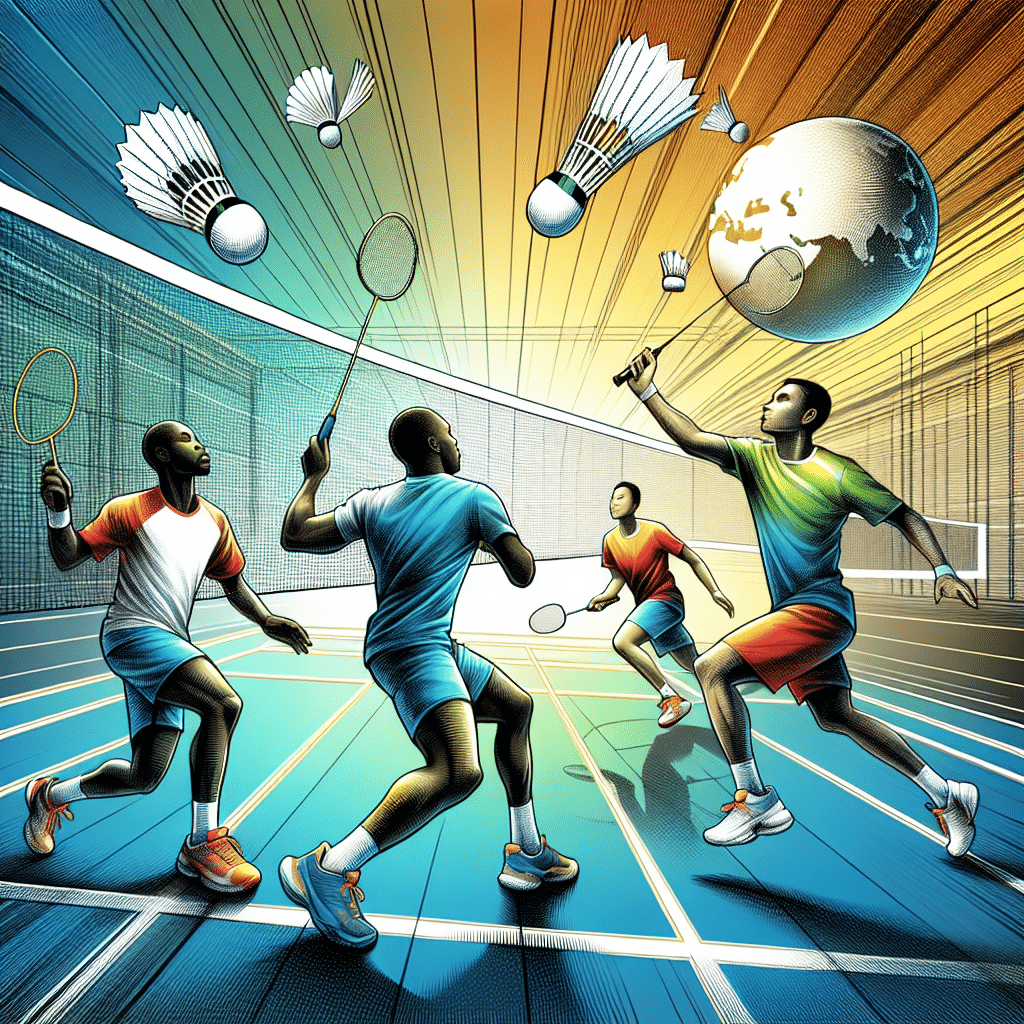The Best Shuttle Flash Badminton Training Techniques from Around the World
Badminton is a fast-paced, exhilarating sport that requires agility, speed, and precision. For those passionate about enhancing their skills, shuttle flash training techniques offer a dynamic approach to improve performance. In this blog post, we’ll explore some of the most effective badminton training techniques from around the world. Whether you’re a beginner or a seasoned player, these methods are sure to help you up your game! 🏸
Table of Contents
1. Introduction
2. The Importance of Shuttle Flash Training
3. Techniques from Asia: The Powerhouses of Badminton
4. European Training Innovations
5. North American Approaches
6. Integrating Techniques for Optimal Performance
7. Conclusion
8. FAQs

The Importance of Shuttle Flash Training
Shuttle flash training is a comprehensive approach that focuses on improving reflexes, footwork, and shot accuracy. It’s designed to simulate real-game scenarios that enhance a player’s ability to react quickly and decisively. This type of training is crucial not only for physical development but also for mental toughness and strategic planning on the court.
Techniques from Asia: The Powerhouses of Badminton
Asia, particularly countries like China, Indonesia, and South Korea, has long been a dominant force in the world of badminton. Their training techniques are renowned for their intensity and effectiveness.
China: The Shuttle Run Drill
In China, the shuttle run drill is a staple. This drill involves rapid lateral movements and quick changes of direction, which are key to improving agility. Players are trained to anticipate the shuttle’s path and react instinctively.
Indonesia: Multi-Shuttle Feeding
Indonesian players excel in multi-shuttle feeding exercises. Coaches feed multiple shuttles in quick succession, forcing players to maintain endurance while practicing precision. This method is perfect for enhancing stamina and accuracy under pressure.
South Korea: The Shadow Drill
South Korean training emphasizes the shadow drill, where players move around the court without a shuttle, mimicking real-game movements. This technique improves footwork and overall court awareness, a critical component for defensive and offensive plays.
European Training Innovations
Europe has also contributed significantly to modern badminton training, focusing on technique and tactical intelligence.
Denmark: The Tactical Simulation
Danish players are masters of tactical simulation, where they practice specific game scenarios. This technique helps players develop strategic thinking and adaptability, essential for outsmarting opponents.
England: Technical Drills
In England, technical drills are prioritized. These drills focus on the biomechanics of strokes, ensuring that every shot is executed with precision and power. This meticulous approach enhances overall shot quality and consistency.
North American Approaches
North America, though newer to the badminton scene, has developed unique methods that incorporate physical fitness into skill training.
USA: Plyometric Training
American players often incorporate plyometric exercises into their regime. These exercises, such as box jumps and lateral hops, boost explosive power and speed, crucial for those quick sprints on the court.
Canada: Cross-Training Techniques
Canadian training frequently involves cross-training with other sports, like squash or tennis, to enhance hand-eye coordination and spatial awareness. This diversified approach helps athletes remain versatile and adaptable.
Integrating Techniques for Optimal Performance
The key to becoming a top-tier badminton player lies in integrating these various training techniques. By combining the agility and precision from Asian methods, the strategic and technical focus from Europe, and the physical conditioning from North America, players can develop a well-rounded skill set.
It’s also essential to tailor these techniques to individual strengths and weaknesses, ensuring a personalized training regimen that addresses specific areas for improvement.
Conclusion
Shuttle flash training offers a world of possibilities for badminton enthusiasts looking to enhance their game. By adopting a global perspective and incorporating techniques from various regions, players can achieve remarkable improvements in their performance. Remember, consistent practice and a willingness to adapt are your best allies on the court. So, grab your racket, hit the court, and let these techniques elevate your game! 🏆
FAQs
Q: How often should I practice shuttle flash training?
A: Ideally, incorporate shuttle flash training into your routine 3-4 times a week, depending on your schedule and fitness level. Consistency is key!
Q: Can beginners benefit from these techniques?
A: Absolutely! These techniques are beneficial for players of all levels. Beginners can start with basic drills and gradually increase intensity as they improve.
Q: What equipment do I need for shuttle flash training?
A: Basic equipment includes a quality racket, shuttlecocks, and appropriate footwear. Additional tools, like agility ladders or cones, can enhance specific drills.
Q: How can I track my progress?
A: Keep a training journal to log your sessions, noting improvements in speed, accuracy, and endurance. Regularly assess your performance in matches to measure progress.
By embracing these diverse training methods, you’ll be well on your way to mastering the art of badminton and enjoying every moment of play. Good luck and happy training! 💪🏸
